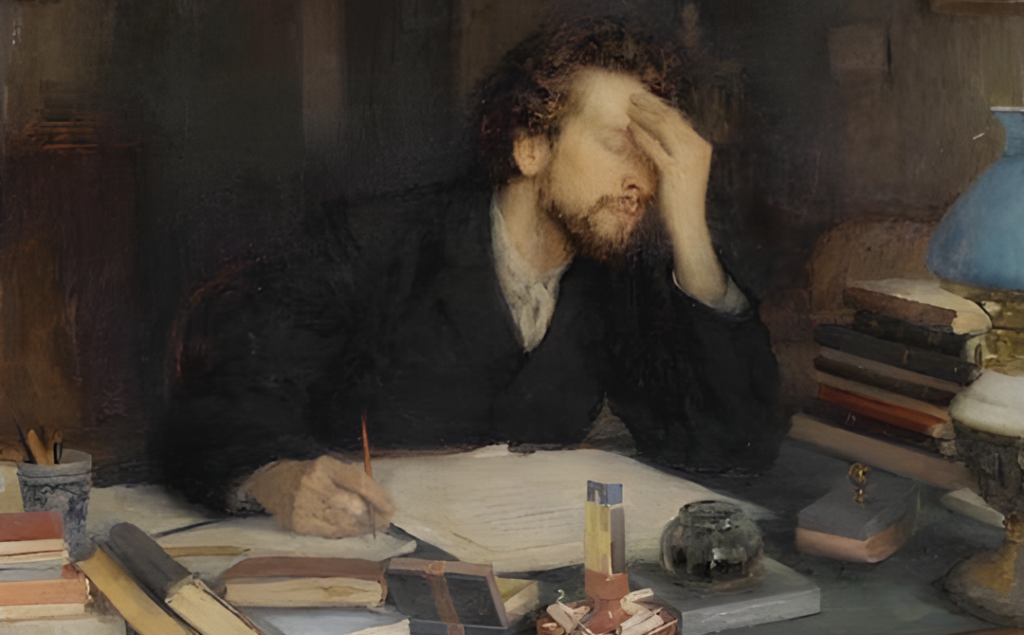Writing an Artist’s Statement? Start with These Questions
Here are some questions to ask yourself when you’re first organizing your thoughts, or before you sit down with a writing coach, to write your artist’s statement.

The goal of an artist’s statement is to give your viewers a sense of who you are as an artist, what your work stands for, and what sets you apart from the rest. It’s important for attracting interest from galleries, collectors, admissions officers, university boards, rewarding bodies, and other artists. It’s also a great way to reflect your own interests back to you.
I teach writing to art and design students, and one challenge they often face when describing their own work is to find words for a piece while allowing it to still speak for itself. Artists sometimes worry that writing about their work might ruin or “over-explain” it, leaving no room for a viewer’s own interpretations. The key to a great artist’s statement is to find a balance between the two, and to make room for both voices.
Start by getting to know yourself and your relationship to your work. Facing the blank page can be daunting, so here are some questions to ask yourself when you’re first organizing your thoughts, or before you sit down with a writing coach. Try to answer as many of these as you can. Some of these questions might seem simple, but in my own classroom I find that sometimes artists tend to focus on what’s complex about their work, and overlook the small, but important details.
What does your work look like? Try describing it as if a reader can’t see it. Try closing your eyes and examining how it appears in your own mind.
What are its physical properties? Colors, shapes, sizes? How do its physical properties and form contribute to its meaning?
How does it exist in space? Is it 2D or 3D? Is it big or small? Is its size important, or can a viewer also experience it on their phone?
Where do we see it? What’s the ideal space for your work? A museum or gallery? A theater or the street?
Is your work temporal? Does it grow, decay, or change? When did you first make this work? Under what circumstances?
How are you making this work? Describe your process. Is it easy or difficult? Is your process methodical, strenuous, violent, or peaceful? How much time does your work take to make? Where do you make it? Do your materials work together or separately?
Why do you make this work? What motivates you? Are you influenced by any particular artists? Are you inspired by personal experiences? By your surroundings? How did you come to produce these particular pieces?
How do viewers experience your work? Are they excited, annoyed, shocked, baffled, turned on, moved, disgusted, amused, terrified, inspired? Do their first responses change when they spend more time with the work?
Who does your work speak to? Is your intended audience the only audience? What does your work say to people beyond the art world?
Does your art respond to current or historical events? Is it political or personal (or both)? Is your own identity important in your work? Does it address contexts such as race, class, gender, sexuality, science, popular culture, or others?
What do you call your work? How do you come up with titles? Do your pieces remain untitled? Why? Do titles complement your work, or does it speak for itself?
A lot of these questions are about what your work is, but what does your work DO? How is it active in the world?
Keep in mind that artist statements are generally short (about 150-300 words). You probably won’t use all of the answers you generate from these questions. Consider what you want your artist statement to say, as opposed to what you want your work to say on its own. These questions will not only help you to gather material for your artist statement, but can bolster your general thinking as you continue to create.
Are you ready to get your statement evaluated or do you want someone to write one for you? Check out Flatpage’s artist services.
Get a rate quote or schedule a consultation call by clicking below.